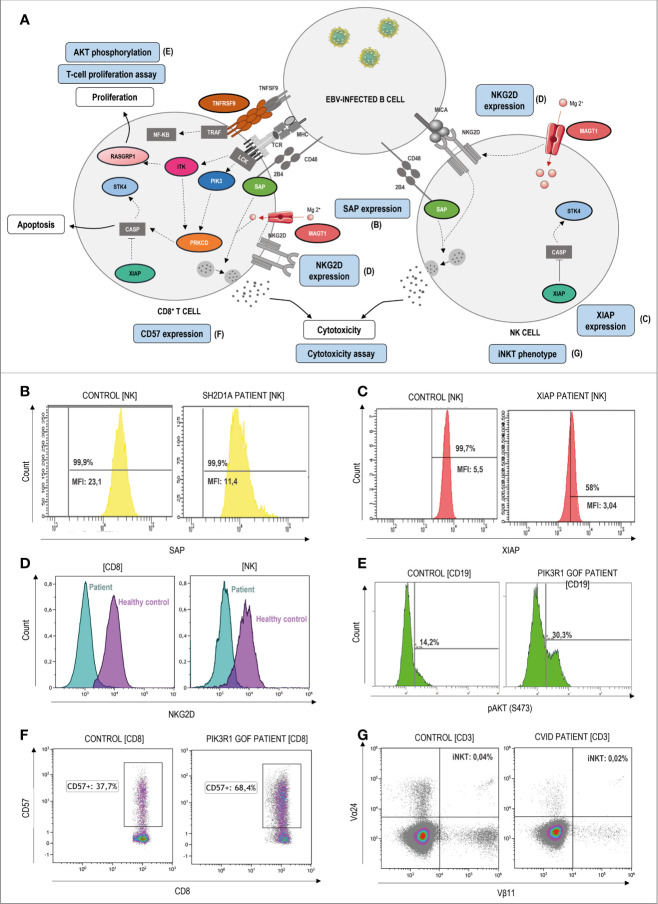Figure 4.
Pathophysiology and functional assays through flow cytometry in ALPS-like patients with EBV-susceptibility. (A) Schematic representation of the genetic defects (in color) and pathways identified in ALPS-like patients predisposing to high susceptibility to Epstein-Barr Virus (EBV)-driven lymphoproliferative disease. Immunologic studies are outlined in blue. The letters in parentheses refer to the functional studies included in figure 4. Defects in the control of EBV infection is mainly due to impairment of CD8, NK and NKT cell cytotoxicity (due to SAP, MAGT1 and TNFRSF9 deficiencies) and/or EBV-specific T cell proliferation (due to ITK, RASGRP1, TNFRSF9 deficiencies, PIK3CD gain of function and PIK3R1 loss of function) or survival (due to XIAP and STK4 deficiencies). (B) Decreased but not absent SAP expression in NK-cells of a patient with SAP deficiency. MFI: median fluorescence Intensity. (C) Decreased but not absent XIAP expression in NK-cells of a patient with XIAP deficiency. (D) Decreased NKG2D expression both in CD8 T and NK-cells of a MAGT1 patient (blue) in comparison with a healthy control (purple). (E) Hyperactivation of the PI3K-AKT signaling pathway is shown as high levels of AKT phosphorylation in a patient with PIK3R1 defect. (F) Senescence phenotype of CD8+CD57+ T-cells in a PIK3R1 patient. (G) Decreased CD3+Vα24+Vβ11+ invariant NKT-cells in a patient with common variable immunodeficiency and ALPS-like features.

